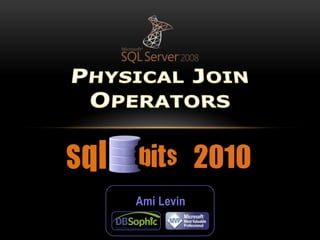Report
Share

Recommended
Uspto reexamination request - update - september 5th to september 11th, 201...

Uspto reexamination request - update - september 5th to september 11th, 201...InvnTree IP Services Pvt. Ltd.
Udstilling & DesignOle Birch Nielsen - moesgaard museums basisudstillinger

Ole Birch Nielsen - moesgaard museums basisudstillingerAssociation of Danish Museums / Organisationen Danske Museer
Recommended
Uspto reexamination request - update - september 5th to september 11th, 201...

Uspto reexamination request - update - september 5th to september 11th, 201...InvnTree IP Services Pvt. Ltd.
Udstilling & DesignOle Birch Nielsen - moesgaard museums basisudstillinger

Ole Birch Nielsen - moesgaard museums basisudstillingerAssociation of Danish Museums / Organisationen Danske Museer
More Related Content
Viewers also liked
Viewers also liked (10)
Optimising Column stores with statistical analysis

Optimising Column stores with statistical analysis
Practical Applications for Data Warehousing, Analytics, BI, and Meta-Integrat...

Practical Applications for Data Warehousing, Analytics, BI, and Meta-Integrat...
Microsoft SQL Server Analysis Services Multidimensional

Microsoft SQL Server Analysis Services Multidimensional
Similar to Physical join operators ISUG 105
Similar to Physical join operators ISUG 105 (20)
Python’s filter() function An Introduction to Iterable Filtering

Python’s filter() function An Introduction to Iterable Filtering
A Brief Conceptual Introduction to Functional Java 8 and its API

A Brief Conceptual Introduction to Functional Java 8 and its API
Speeding up queries with semi joins and anti-joins

Speeding up queries with semi joins and anti-joins
Sww 2008 Automating Your Designs Excel, Vba And Beyond

Sww 2008 Automating Your Designs Excel, Vba And Beyond
More from sqlserver.co.il
More from sqlserver.co.il (20)
SQL Explore 2012 - Tzahi Hakikat and Keren Bartal: Extended Events

SQL Explore 2012 - Tzahi Hakikat and Keren Bartal: Extended Events
SQL Explore 2012 - Michael Zilberstein: ColumnStore

SQL Explore 2012 - Michael Zilberstein: ColumnStore
Bi303 data warehousing with fast track and pdw - Assaf Fraenkel

Bi303 data warehousing with fast track and pdw - Assaf Fraenkel
Physical join operators ISUG 105
- 1. Physical Join Operators 2010 Ami Levin
- 2. Session Goals SQL Server implements three different physical operators to perform joins. In this session we will see how each of these three operators work, its advantages and challenges. We will try to understand the logic behind the optimizer’s decisions on which operator to use for various joins using (semi) real life examples and see examples about how to avoid common pitfalls.
- 3. Equi-Inner-Join SELECTX,Y,Z… FROM[Table1] INNER JOIN [Table2] ON [Table1].[C1] = [Table2].[C1] AND [Table1].[C2] = [Table2].[C2] WHERE…
- 4. Next Time Outer Joins Non Equi-Joins Logical Processing Order NULL Value Issues Join Parallelism Partitioned Joins
- 5. What Is a Join
- 6. Nested Loops Fetch next row from blue input Start No More Rows? Quit True False Find matching rows in red input
- 7. Considerations “Outer Loop” = The Number of Iterations At Least One Small Input Preferable “Inner Operation” = Work for Each Iteration Index/Table Scan Index Seek with Lookup Covering Index Seek
- 8. Foreign Key Joins Joins Parents and Childs Most Common Relationship is One-to-Many Parent ISIndexed Primary Key or Unique Indexing Foreign Keys Enables Efficient Use of Nested Loops
- 10. Fetch next row from blue input Start No More Rows? Quit True False Merge Fetch next row from red input Rows Match? True False
- 11. Considerations Input Must be Pre-Sorted By All Join Expression(s) Pre-Sorted in Plan, not necessarily in DB… Immediate& Sorted Match Outputs FASTFIRSTROW Hint Very Efficient and Simple Operator
- 12. Merge DEMO
- 13. Fetch next row from blue input Fetch next row from red input Start No more rows? No more rows? True True False False Quit Hash- Match Apply “hash” function Apply “hash” function Place row in “hash” bucket Probe bucket for matching rows
- 14. Considerations Hash Function Selection CPU, Memory and potential I/O Overhead No Sorting Whatsoever Probing Costs Not Revealed May Indicate Sub-Optimal Indexing
- 15. Hash Match DEMO
- 16. Conclusion
- 17. For More Information Books On Line Microsoft White Papers “SQL Server 2008 Internals” Kalen Delaney, Kimberly L.Tripp and more… Craig Freedman’s MSDN Blog http://blogs.msdn.com/craigfr/about.aspx
- 18. Physical Join Operators Q&A?
- 19. Thank You
- 20. Coming up… P/X001 Designing High Scale OLTP systems Thomas Kejser P/L001 TSQL Techniques – Why and how to tune a routine Dave Ballantyne P/L002 Implementing Common Business Calculations in DAX Chris Webb P/L005 Consolidating data collection with SQLDIAG and analysing it all with SQLNexusChristian Bolton P/T007 Introduction to SQL Modelling Services Robert Hogg #SQLBITS